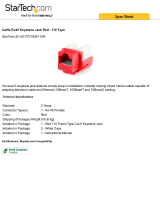
Table of Contents
Key safety instructions ....1
Introduction .......................3
Projector features ...................................... 3
Shipping contents ...................................... 4
External appearance of the projector ........ 5
Device control and functions .................... 6
Projector Positioning .....12
Choosing a location ................................. 12
Projection Dimension............................... 13
Connection ......................14
Connect to the computer or monitor ........ 15
Connecting to Video source devices ....... 16
Connecting to HDMI devices ................... 17
To connect the projector to a Component
Video source device: ............................... 17
To connect the projector to a S-Video
source device: ......................................... 17
Connecting to composite video source
devices .................................................... 18
Audio playback with the projector ............ 18
Operation .........................19
Activate the projector ............................... 19
Using the menus...................................... 19
Disabling the password function .............. 21
Setting a password .................................. 21
If you forget your password ..................... 21
Entering the password recall procedure .. 22
Change Password ................................... 22
Disabling the password function .............. 22
Switching input signal .............................. 23
Changing HDMI input settings ................. 24
Adjusting the projected image ................. 25
Correcting keystone................................. 26
Adjusting the 4 corners ............................ 27
Zoom out for detailed review ................... 28
Selecting the aspect ratio ........................ 28
About the aspect ratio.............................. 29
Optimizing the image ............................... 30
Using Screen Color ................................. 30
Fine-tuning of image quality in user
modes ...................................................... 31
Setting the Presentation Timer ................ 34
Hiding the image...................................... 35
Locking control keys ................................ 35
Creating your own startup screen............ 36
Operations at high altitudes ..................... 36
Using the CEC function ........................... 37
3D functions............................................. 37
Using the projector under standby mode 37
Adjusting the sound ................................. 38
Switch off the projector ............................ 38
Menu operations ...................................... 39
Description of each menu ........................ 42
Maintenance ....................47
Care of the projector ................................ 47
Using the lter.......................................... 48
LED Indicator ........................................... 49
Troubleshooting .............50





















![PONER SAUNDProjector, [2020 Updated] Mini Projector 1080P Supported, 5500 Lux 210" Display](http://vs1.manuzoid.com/store/data/001208228_2-7c0288773e53ffafb4e7d89f8e3ca176-160x210.png)
